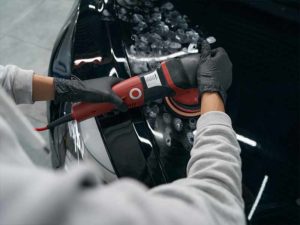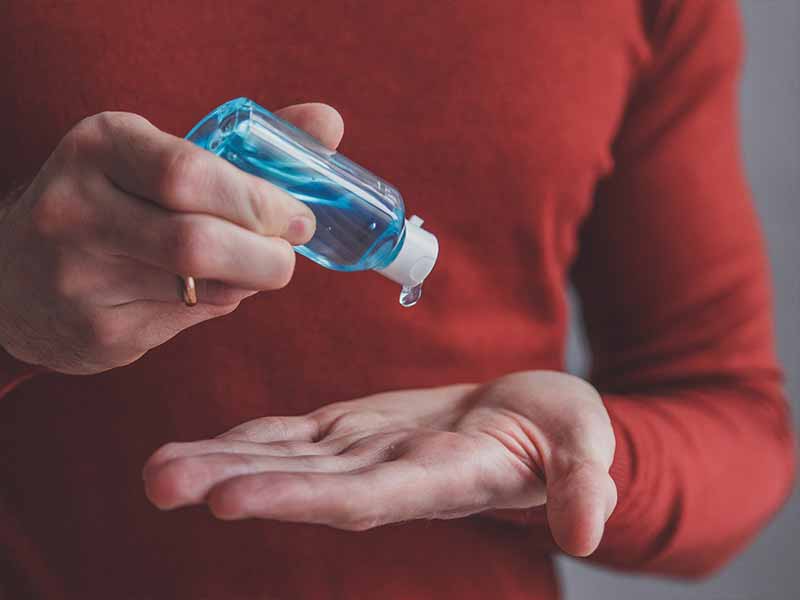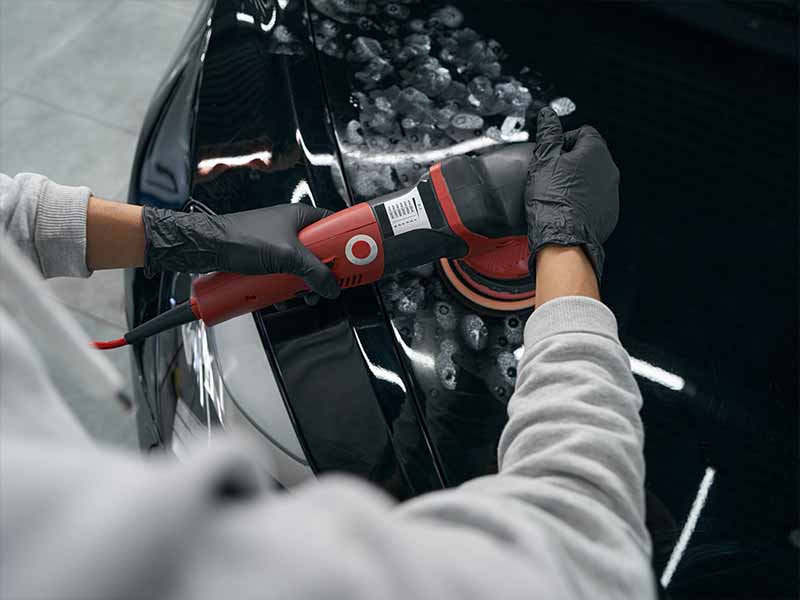Table of Contents
Protecting car paint from tree sap, bird droppings, UV rays, bug splatters, and more is a challenge. A garage or car port can only protect your finish when you’re at home. And a car cover isn’t very practical for a daily driver.
To properly protect your car’s exterior, you need a layer of protection over the entire car’s exterior.
In this article we’ll go over all of the pros and cons of the 4 types of coatings that you can apply to your car’s paint surface to ensure it is as protected from the elements as is reasonably possible.
Let’s dive into the details.
How To Protect Car Paint
It’s important to protect car paint from scratches, chips, sun damage, and environmental elements. The 4 most popular methods of car paint protection, in order of protective abilities, are:
- Car Waxes
- Paint Sealants
- Ceramic Coatings
- Clear Paint Protection Films
Each have their own pros and cons. Just because car wax is the least protective doesn’t mean it’s a poor choice.

Option 1: Wax
Car wax is the oldest product used to protect car paint. The main ingredient is carnauba wax which is a natural wax produced from the leaves of the copernicia prunifera palm tree from northeastern Brazil.
The waxy coating of the leaves is extracted and refined. The end product that is the purest product for protecting your car is usually in the form of a wax paste.
Carnauba wax is the hardest natural wax which makes it ideal for protecting car paint. While the wax alone is a good protectant, these days it is often mixed with synthetic polymers and resins to help extend the length of time it’s able to protect your car’s paint.
The additives also help improve carnauba wax’s ability to protect your car from harmful UV light from the sun and improve its hydrophobic properties.
Advantages Of Car Wax
- Inexpensive
- Has good hydrophobic properties
- Provides good UV protection
- Fairly easy to apply wax paste
- Produces an excellent shine and deep gloss
Disadvantages Of Car Wax
- Typically only lasts a few months and begins to fade after 30 days
- Doesn’t provide any scratch protection

Option 2: Paint Sealant
Paint sealants are the next evolution beyond traditional car wax. They are primarily a mixture of synthetic polymers and resins that can provide significantly longer protection to your vehicle’s paint.
While natural wax products typically only protect your car for a few months at best, a paint sealant can provide protection for a year or more before loosing its hydrophobic properties. My personal favorite is Wolfgang’s Deep Gloss Paint Sealant and I can vouch for it lasting well beyond a year on my car.
Paint sealants typically can’t produce the deep gloss that a carnauba wax is capable of producing, but manufacturer’s have done a very good job of bridging that gap. Often they will supplement paint sealants with carnauba wax to help improve its shine and gloss.
Paint sealants are often marketed as liquid wax, hybrid wax, or some other name that includes the term wax. While waxes that come in a liquid form may contain some natural wax, they are made up of more synthetic polymers and resins than carnauba wax.
Liquid products are usually the easiest to apply. Paste wax isn’t difficult, but it is a little less user-friendly than a liquid.
Advantages Of Paint Sealant
- Inexpensive
- Has good hydrophobic properties
- Provides good UV protection
- Easy to apply liquid wax
- Produces a good shine
- Some sealants last well over a year
Disadvantages Of Paint Sealant
- Doesn’t provide any scratch protection
Option 3: Ceramic Coating
Ceramic coatings have become hugely popular in the last several years, and for good reason. Ceramic coatings provide an incredible car paint protection coating that can last for many years. Also, unlike wax or sealant, they can provide some protection against light scratches and swirl marks.
These coatings come in two may flavors, consumer-grade and professional-grade. Consumer-grade coatings are ones that are considered easy enough for the average DIY detailer to apply. Professional-grade coatings need to be applied by a trained professional detailer to be applied correctly.
Both coatings will have similar abilities to protect your car’s paint, but the professional coatings will be slightly thicker which improves scratch protection and typically last longer.
The scratch protection that a ceramic coating can provide shouldn’t be oversold though. They can’t keep someone from keying your car for instance. What car owners should know though is that most of the light scratches and swirl marks that accumulate in clear coat over time will be prevented by ceramic car paint protection.
Another key differentiator car owners should know is that a ceramic coating will need a topper applied a couple times a year to restore the hydrophobic properties and shine that will fade quickly. The hard ceramic barrier on top of your car’s paint will still help prevent light scratches and swirls in your clear coat.
Given that a ceramic coating can protect your car for many years, it’s worth doing some prep work before having your car’s paint coated. Paint correction is recommended to fix swirls and surface scratches in the clear coat. This is because once the coating has been applied, it’s permanent and the paint defects will be locked in unless you remove the coating.
Advantages Of Ceramic Coating
- Consumer-Grade coatings are affordable
- Has excellent hydrophobic properties
- Has good UV protection
- Produces an excellent shine
- Lasts for many years
Disadvantages Of Ceramic Coating
- Expensive, especially professional-grade coatings
- Difficult to apply
- Will loose hydrophobic properties and shine quickly if not topped up on a regular basis

Option 4: Paint Protection Film
In a lot of ways, paint protection film (also know as PPF or clear bra) is the ultimate way to provide protection to your car’s exterior. It isn’t without its flaws though.
PPF is a thick sticker-like material that gets applied directly to the car’s exterior paint surface. This material can be applied to your entire car, but some car owners opt to only have it applied onto front facing surfaces to save money.
The paint protection film is capable of preventing moderate scratches and even minor rock chips. It will also provide protection from damaging UV rays, tree sap, bird droppings, industrial fallout, and other environmental contaminants.
It’s labor-intensive to have your vehicle wrapped which means that it is very expensive. Adding to the expense is the fact that paint correction is highly recommended before wrapping your vehicle as well. The product itself doesn’t cost that much so if you’re willing to give it a try yourself you could save quite a bit of money.
There are few downsides to PPF for car owners to keep in mind before pulling the trigger. Paint protection film is that it doesn’t last forever and will need to be removed eventually and replaced. The film yellows over time. Some films last longer than others so do your research here.
If a rock chip occurs, it will likely damage the film while managing to protect your car’s paint. The end result is that you’ll need to replace the entire piece of clear bra material that was damaged to get rid of the unsightly tear in the film.
PPF also usually doesn’t look as shiny as your clear coat alone, but this is an area that has been improving. Plus, you can apply wax, paint sealant, or a ceramic coating on top of it to help improve its look if you’re not happy with the results. I will say that seeing PPF wrapped cars in person, they do look good.
Advantages Of Paint Protection Film
- Provides amazing protection from swirls and road debris
- Provides good protection from UV damage
- Requires little maintenance
Disadvantages Of Paint Protection Film
- Expensive
- Not DIY-friendly
- Doesn’t have the best hydrophobic properties
- Not as shiny or glossy as other options
Best Way To Protect Car Paint
The option you choose to go with and consider the best product to protect your car will depend upon your unique desires, budget, and goals.
Natural waxes tend to be popular with car show enthusiasts or anyone that prizes
Most people opt for a sealant. Sealants are inexpensive, easy to apply, and protect well against environmental contaminants and make washes easier.
DIY consumer-grade ceramic paint protection is extremely cost effective and very popular. It is a little more tricky to apply than a sealant, but it is well within the capabilities of anyone willing to give it a try.
Professional-grade coatings last longer and protect better, but only you can decide if it’s worth the added expensive.
PPF truly is amazing but the expense and fact that it isn’t DIY-friendly prevent most car owners from using in on their car paint.

Tips To Keep Your Car's Paint Protected
No matter which method you choose to protect your car’s finish, there are some helpful tips we can provide that will help you get the most out of each of them.
Decontamination Prior To Application
All protective coatings require prep work to ensure they bond well with the clear coat. This will improve their durability and allow you to get the longest protection from them.
Paint prep is more than simply washing your car or truck. It includes decontaminating the paintwork to remove bonded contaminants on the surface of the finish.
This is usually done with a fallout remover that neutralizes iron particles from brake dust and industrial fallout. A clay bar is then used to remove dirt, tree sap, bird droppings, bug splatters, and other bonded road grime that simply washing can’t remove.
Washing On A Regular Basis
Washing your car regularly will remove contaminants that can break down the protective layer on the surface of your finish. Bird droppings, bug guts, acid rain, and other environmental contaminants are highly acidic and reduce the performance of your coating.
Park In A Garage Or Other Covered Structure
Keeping your vehicle inside or covered and out of the weather will minimize the amount of contaminants that collect on the finish that can begin breaking down the coating you choose to protect your clear coat.
Washing away road debris and grime will help but minimizing the amount that collects in the first place can make a big difference.
Top Up With Additional Protection
Protective coatings lose their hydrophobic properties over time. Quick detailer and ceramic toppers can help restore water beading performance and resistance to environmental contaminants.
Also, good water beading helps make a car wash more effective when performed.

Helpful Links
Conclusion
Protecting your paint will ensure your clear coat lasts as long as possible and will help prevent oxidation and clear coat failure.
Understanding the pros and cons of the various products available to protect your vehicle will help you choose the right product for your situation and goals.
Budget is a big factor when choosing a coating that will protects your finish. Your ability to apply these products yourself can dramatically reduce the cost.
No matter which you choose, all of these choices can dramatically improve the look of your vehicle and extend the life of your paintwork many years.
Good luck and happy detailing.









